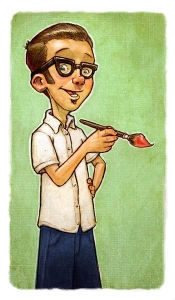 Mark was born and raised in Northern Utah under the shadow of the Wasatch Mountains. He spent many childhood days climbing, exploring, and causing general mayhem on the mountainside. Running around with his brothers he learned early on the finer things in life like the sound of breaking glass, the freedom of running around in your underwear, and the feel of rushing wind on your face as you’re falling out of a tree.
Mark was born and raised in Northern Utah under the shadow of the Wasatch Mountains. He spent many childhood days climbing, exploring, and causing general mayhem on the mountainside. Running around with his brothers he learned early on the finer things in life like the sound of breaking glass, the freedom of running around in your underwear, and the feel of rushing wind on your face as you’re falling out of a tree.
Mark has always loved to doodle whatever silly thing popped into his head. He never took too seriously but always liked to make people laugh with his drawings. By a strange series of events he found himself in foggy San Francisco studying illustration at the Academy of Art University, where he earned a Bachelor degree in Illustration. Now his days are spent drawing and painting pictures filled with kids, escaping circus monkeys, and everything in between.
Here is Mark talking about his process:
Generally I start out with thumbnails to get an idea how I’m going to break up the space.
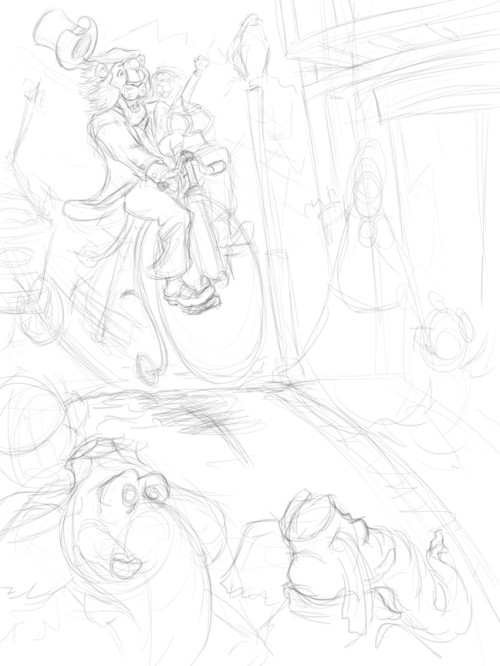
Once I get something I like I will blow it up and start working right over the top. I will do this either on paper or in Photoshop, for this one I did all the initial drawing in Photoshop (it was more of a matter of time frame than anything). I will then scan it in if it was done on paper, and then start to flesh things out and figure some of the detail. Once I am happy with that I will print it out very lightly and do a pencil drawing over it further working out the detail.
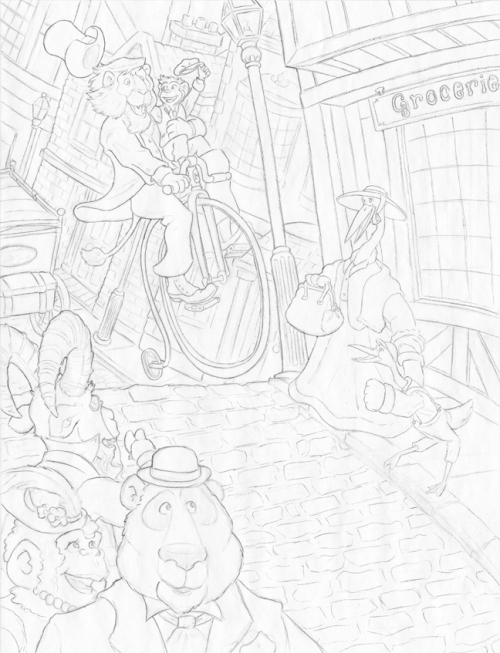
Once I am happy with the finished line drawing I will scan it back into Photoshop, and clean it up if it needs to be. Generally at this point I will also give the line work a little bit of color just so it’s not black.
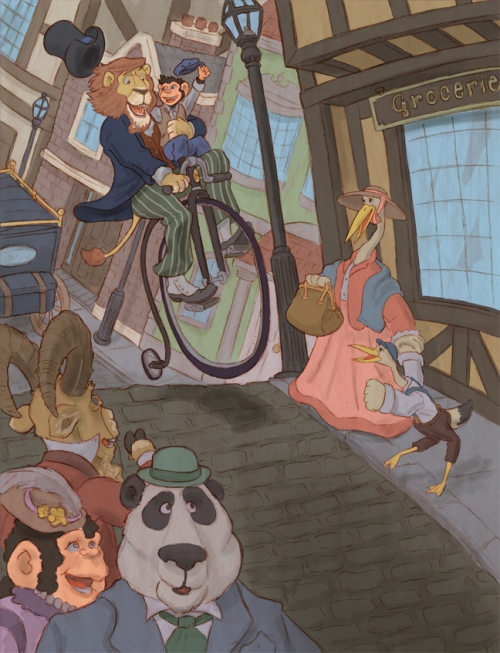
Once in photoshop I will do what I would call an underpainting. I will layout the basic color scheme and do some shadow lay in. This stage gives me a chance to set my basic value pattern and color scheme, but everything
will have a least a layer of acrylic over the top of it. Sometimes the colors will change quite a bit by the final if something isn’t working. Also this is a good stage to add a light overall layer of color. For example if this is going to be a cool image a semi transparent layer of blue would work good. On this painting it has a slightly warm tone over it. Basically at this point all of the space is filled even though somewhat rough.
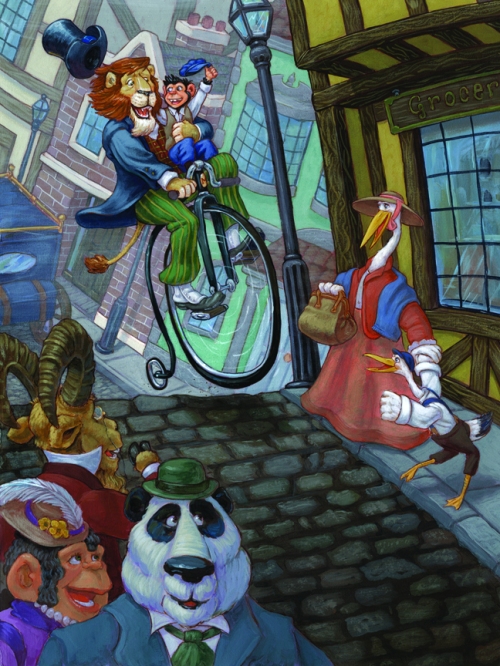
I print this out on epson watercolor paper. Then I spray it with a coat of Krylon workable fixative to help keep the ink on the paper. Next I get the paper wet and stretch it like you would any watercolor paper. I highly doubt that epson suggests this but with a little trial and error it works quite well. When wet you do have to be somewhat careful because the paper is a bit fragile. While it is still somewhat damp I coat the entire image in a layer of matte medium. This seals it all down and gives a nice tooth for painting. Then I let it dry completely. For the most part I paint with acrylic but will use watercolor, colored, pencil, and just about anything I think will work. When painting I generally work from furthest away to the front. That way you don’t have to worry about the
edges of stuff that has already been painted. I’ve also found doing the background first makes it easier to keep your values working. It also gives you a clear plan of attack of how to finish your painting. So working from back to front I go along adding details and finishing it off.
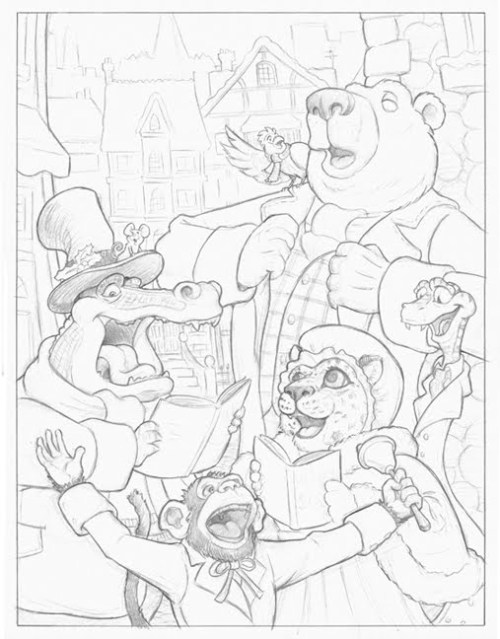
First, I sketch and once I’m happy I scan it into Photoshop. I adjust the color of the line to either a warm or cool color depending on the painting. I basically do a quick color study under the line drawing in Photoshop. I set the basic values and colors at this step. For this painting everything has kind of purple cast to keep that cool feeling. You could go a lot further at this point than I did, but I prefer to do most of the work in paint.
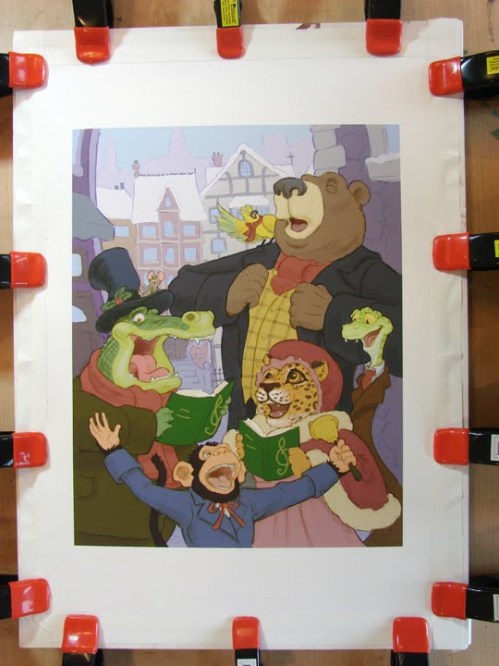
After I’m done in Photoshop I printed it out on some 13×19 Epson water color paper. I gave a few quick coats of workable fixatif. The ink in my printer is very waterproof or else you have to really coat it with workable fixatif. Then I stretch it like you would any other type of watercolor paper.
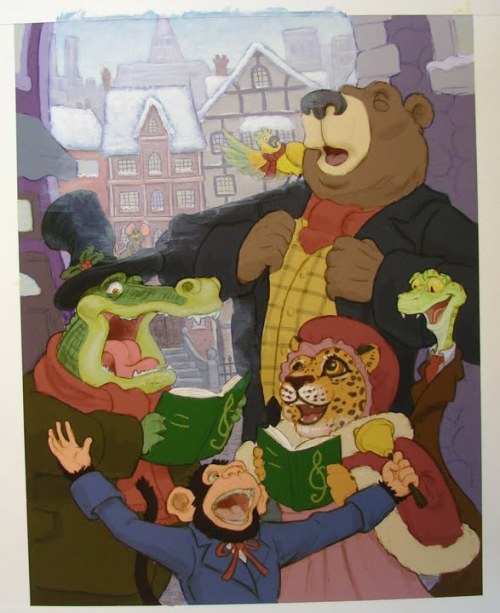
In the end pretty much all of the digital painting won’t be visible, but it helps to speed up the process, and gives you some direction. I use acrylics and usually start from the furthest point and work my way forward. For me it helps me keep control of values, and you don’t have to worry about painting around things as much. Also if I paint the funnest things first then I run out of motivation to paint everything else.
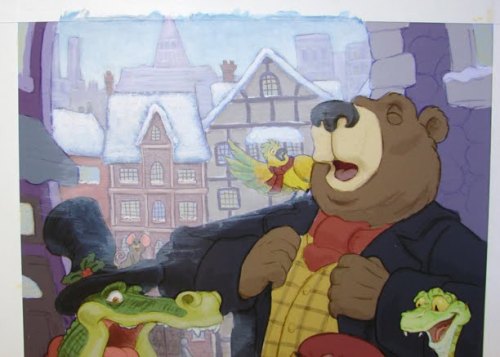
Here’s a detail where you can see that I’m not very concerned about over painting things in the foreground.
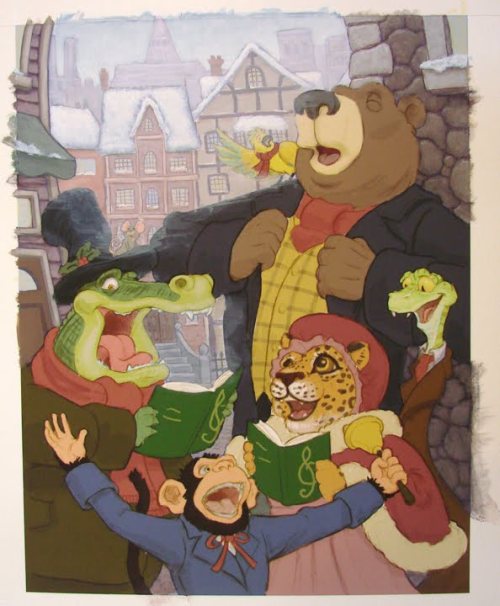
I keep moving forward. The buildings are a good example of how in paint I refine things but the digital color still peeks through here and there. Basically the same concept as toning a canvas.
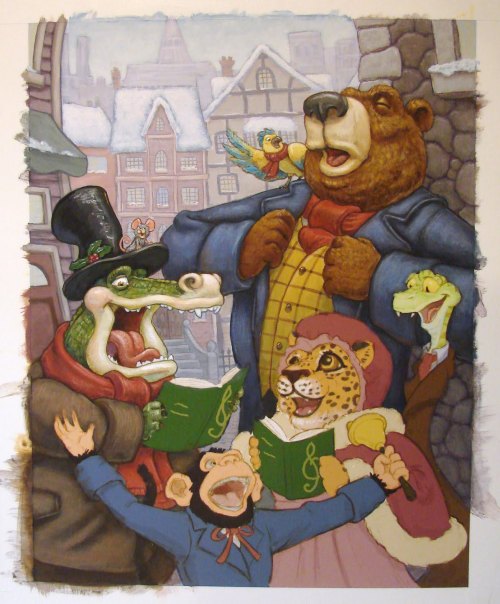
The values are off in this picture, but at this point I’m starting to refine the main characters.
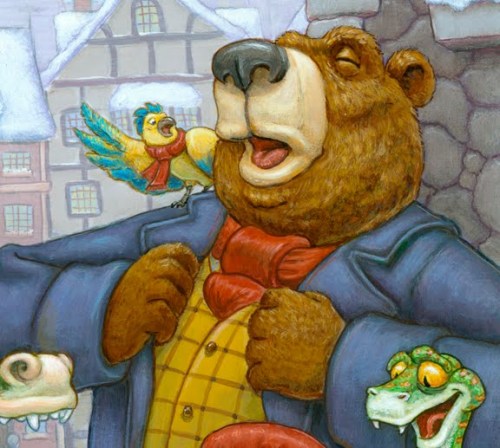
A few detailed shots
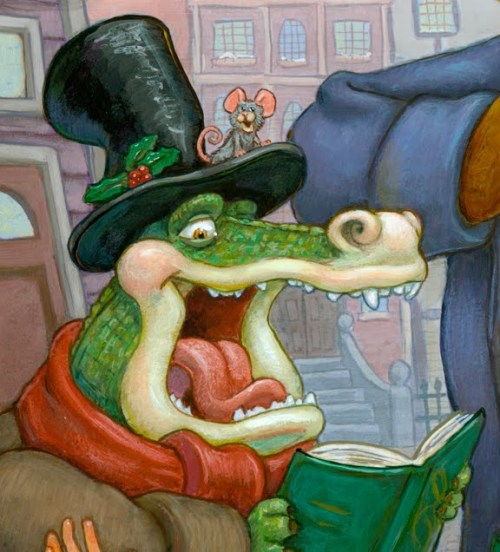
Once everything is painted I spend a little more time making all the small adjustments. I could do this forever and would more than likely eventually end up ruining the painting. So after a bit I usually stop myself and call it finished.
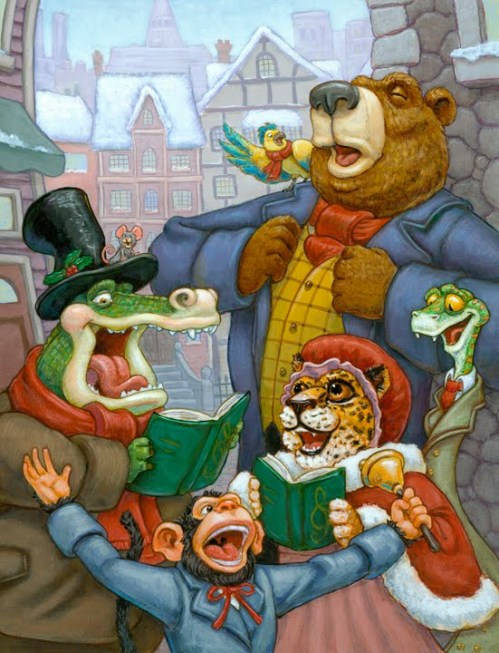
How long have you been illustrating?
I believe this year will be my fifth year of illustrating. I’m still learning, growing, and loving it.
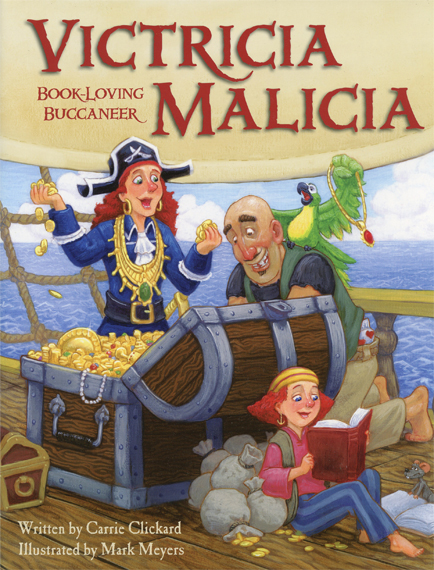
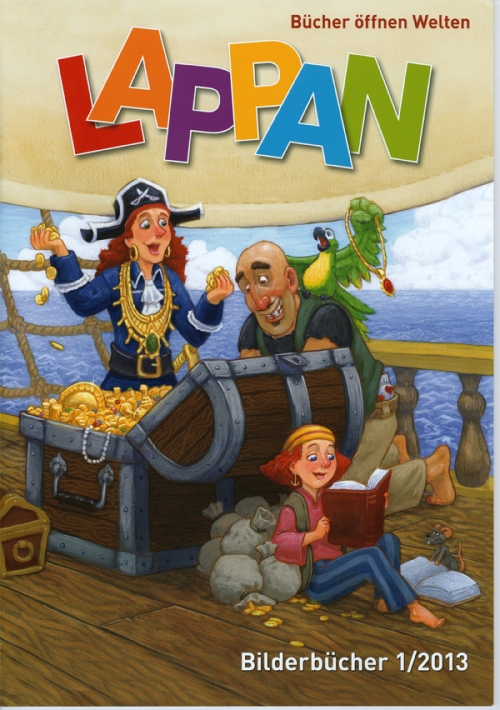
I see you live in Utah and attended Academy of Art University. How did you decide to attend AAU?
I had been playing around with 3d animation programs and making little movies at a local college. I thought maybe I would be interested in that. My sister that lived in San Francisco at the time suggested I come and tour the school. Luckily for me they had a pretty open enrollment program because I did not have much of portfolio. I had always loved to draw and make stuff but hadn’t taken it very seriously up to that point. When I actually got to AAU they start all students in fundamental drawing classes. I was honestly terrible at it but I loved it. In that first semester I made up mind do go into illustration and never even took a single 3d animation class.
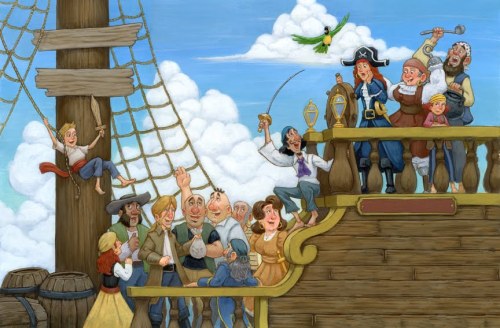
Can you tell us a little bit about that school?
For me it was a great school. They put a huge focus on learning to be a good craftsman, a very classical approach to art. As I mentioned above I didn’t have much training so it was good to start on the bottom. I can’t really speak for the rest of the school but the Illustration department and its faculty were incredible. Most of the teachers were very skilled illustrators and very willing to share their knowledge. Another great thing about being there was the huge amount of artwork that I was exposed to.

What types of things did you study there?
Kind of hard to narrow it down but lots of live drawing and painting. Then as I got further along the classes became more specific to what you wanted to do. That way you are building a portfolio of the type of work you want to do.
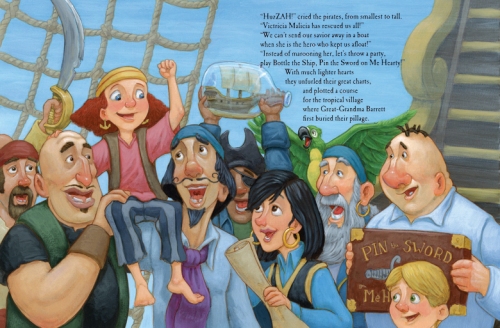
What classes were your favorites?
There were probably three classes that were my favorite. The first ones were the base illustration classes that were taught by the talented Robert Revels and Stephen Player. Craig Nelson really taught me a lot about telling a story with pictures in narrative storytelling. I had Leuyen Pham, who is a fantastic children’s book illustrator, as a teacher in a children’s illustration class which really pushed me in the direction that I have gone.
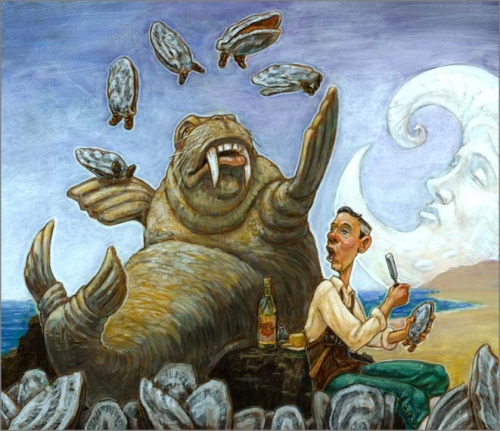
Did the School help you get work?
I don’t know that the school directly got me work. However they do have good programs to help their students get work. I just tend to be the type that goes out on there own.

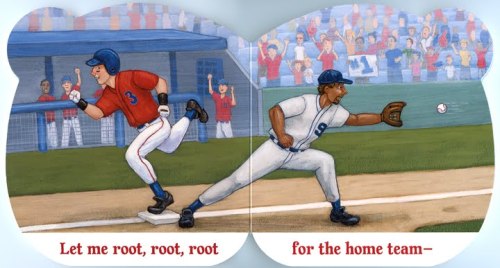
Do you feel that the classes you took there have influenced you style?
Of course the classes I took influenced my style. I think everything you see and draw does. In fact I was so influenced by them that eventually I had to step away a bit and start pushing my own style.
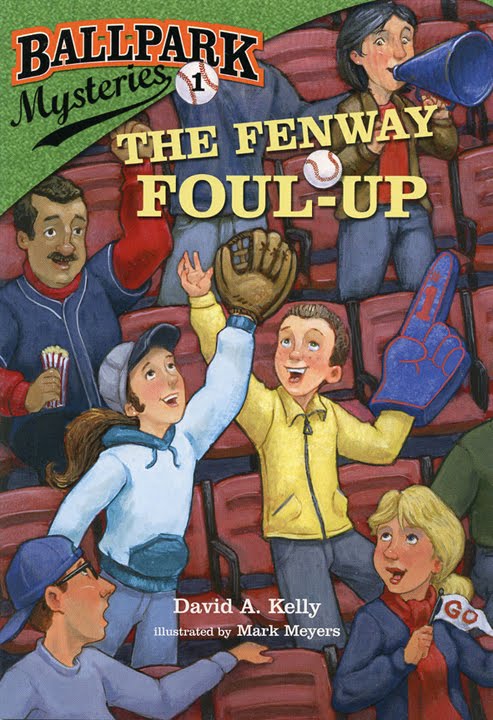
What was the first thing you did where someone paid you for your artwork?
I think the first time I ever got paid for artwork was in the sixth grade when a drawing I did won as the cover for our yearbook. I was pretty excited when they gave me a crisp twenty dollar bill.
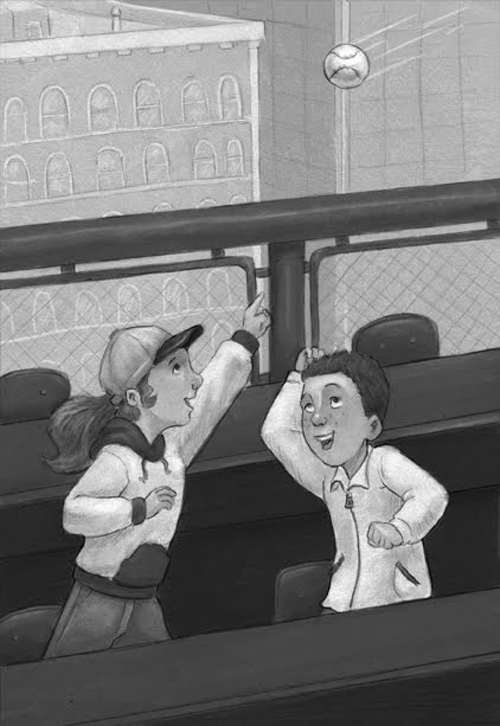
Did you move back to Utah after you graduated?
We stayed in the bay area for a couple years after I graduated, and then moved back here in I believe about 2010 or so.

What was the first illustration work you did for children?
The first illustration work I did for children was an educational book that I did for Houghton Mifflin.
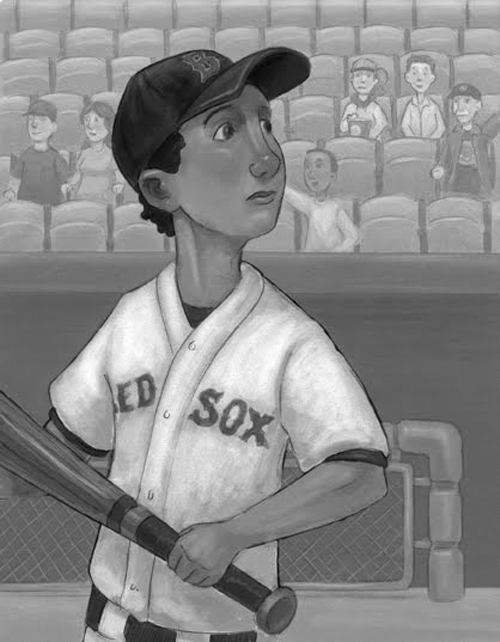
How did that come about?
I had just gotten an artist rep and that was the first job that they sent my way. I believe it was in my last semester of college.
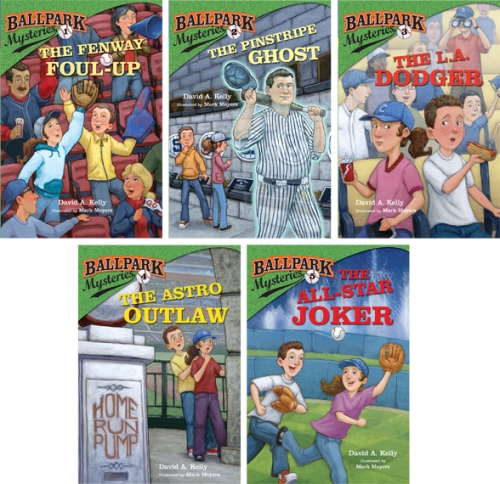
When did you decide you wanted to illustrate a children’s book?
It was probably about half way through college that I really started pushing towards children’s books. I was classically trained but my natural style tended to lean a bit to the cartoony side. I really started reading a lot of picture books and loving how the words and artwork went together. It’s still fascinating to me how the words and the pictures can simultaneously tell two stories at the same time. I also realized I was a kid who never grew up and that children’s books very much matched my sense of humor.
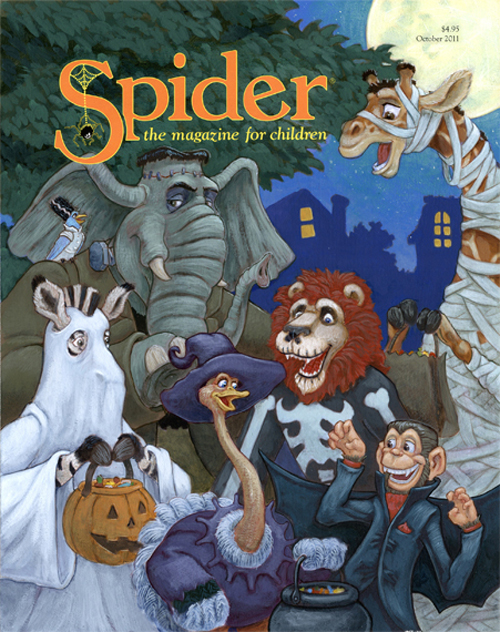
What was your first picture book? Who was the publisher?
My first picture book was Victricia Malicia and published by Flashlight Press. It’s the story of a little girl who is a book hound but is born into a pirate family.
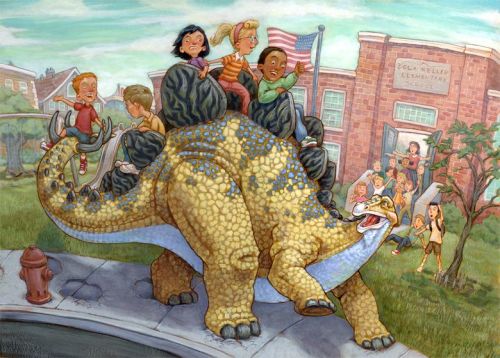
Can you tell us the story behind you getting this job?
I had an art rep but I also like to be able to send out some of my own promotional material. I had found their contact info and sent them my promo. After a little while they contact me and said they had a book that they thought would match my style, and as they say the rest is history.
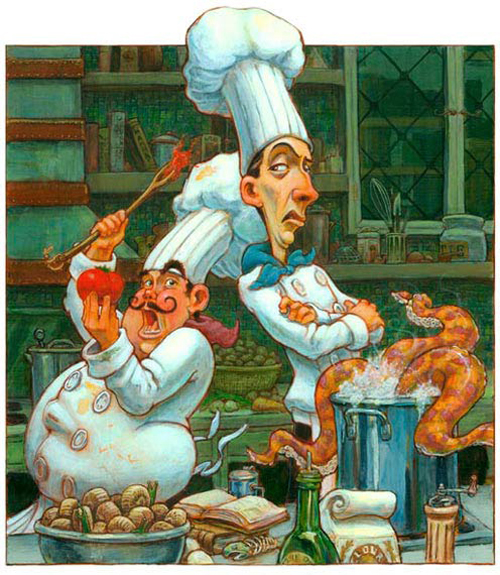
Did you do anything specific to get the contract to illustrate The Ballpark Mysteries published by Random House?
I don’t know that it was anything special. It was from promotional material that either me or my rep sent out.
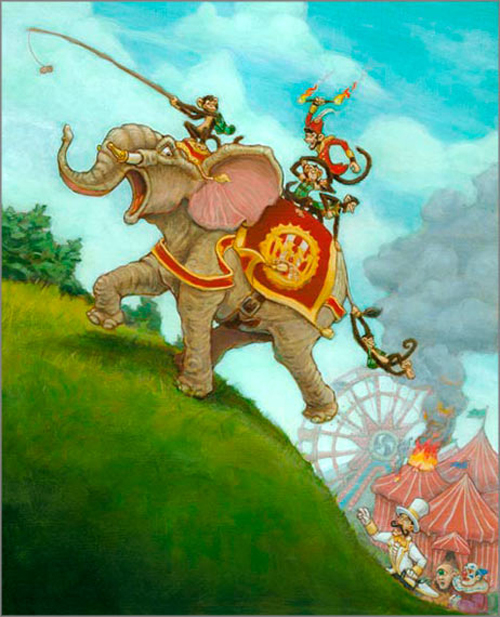
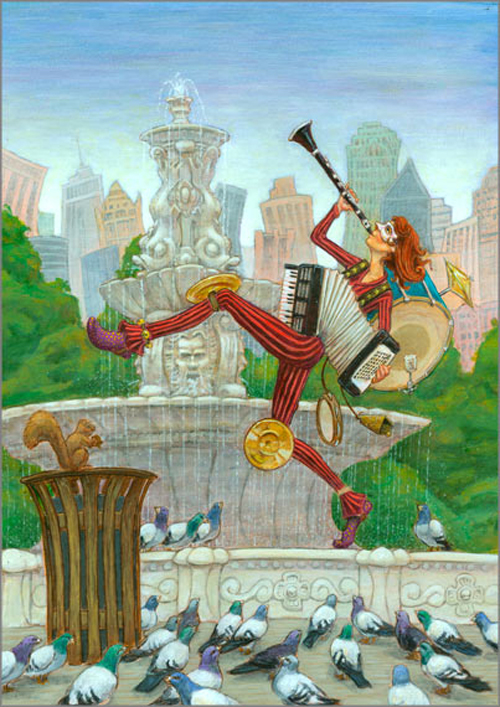
How did you get the opportunity to illustrate Take Me Out to the Ball Game?
Take me out to the Ball Game was a fun one to do and I had already illustrated a book for the publisher (read next question).
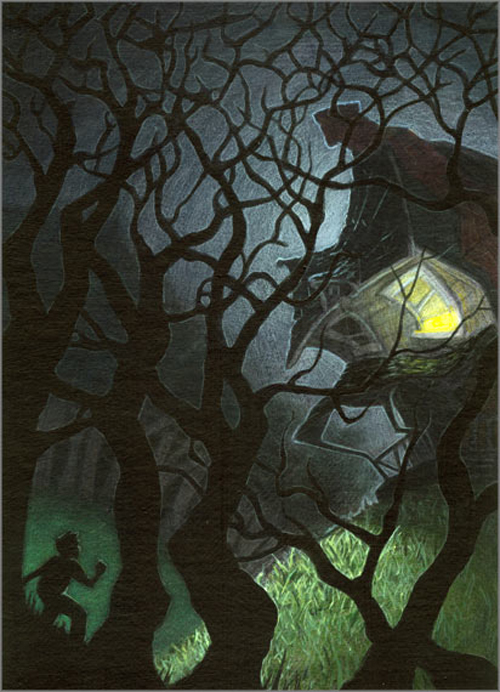
Is this the first book that you did with Ideal’s Candy Cane Press?
The first book that I did for Ideals was Counting Cows by Michelle Medlock Adams. It’s a counting book about a boy who is tired of counting sheep and decides to give cows a try. Though there are still a few sheep thrown in for fun.
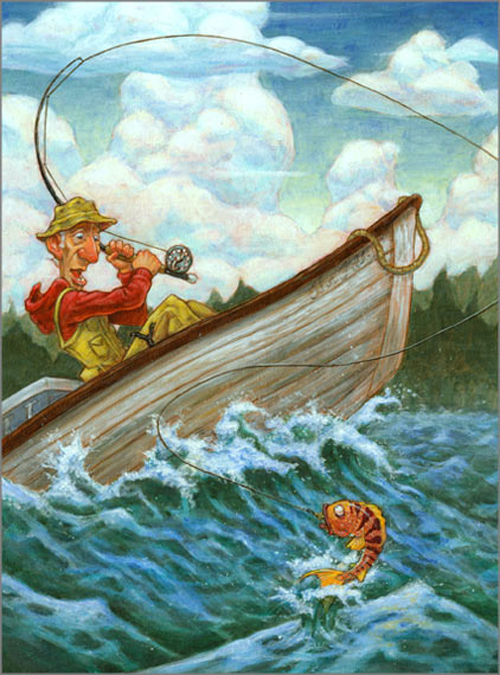
How did that contract come about?
I can’t remember exactly on this one but I believe they had seen my artwork on my artist rep’s website.
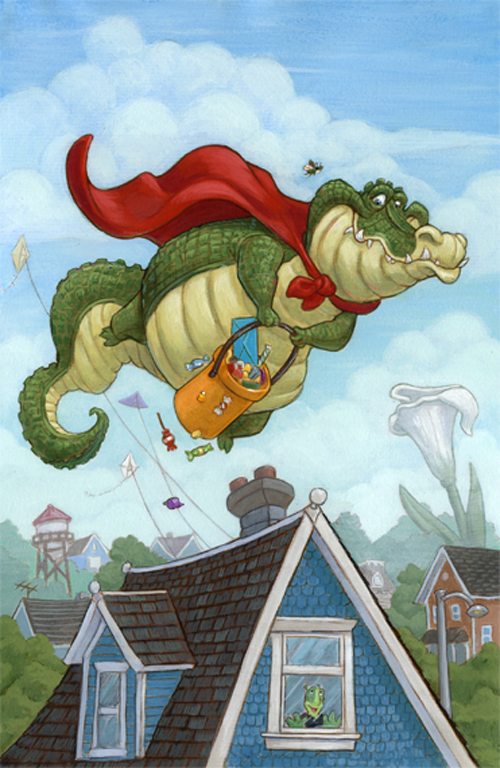
Have you done any work for children’s magazines?
I have worked with Spider, Cricket, Houghton Mifflin, and Highlights for Children. Probably my favorite of those was doing the Halloween cover for Spider Magazine.
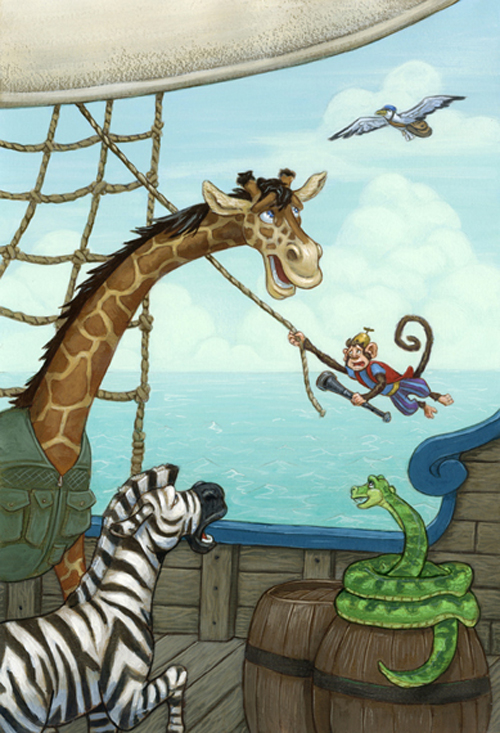
Have you worked for educational publishers?
I have done a fair amount of work for educational publishers.
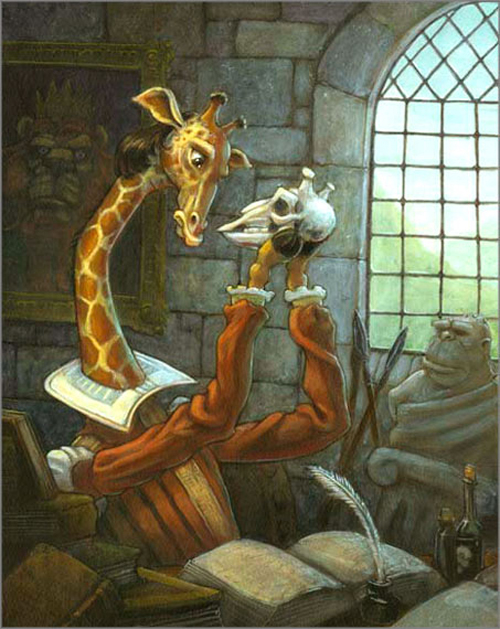
Do you have an artist rep or an agent? Could you tell us how the two of you connected?
I am represented by Wendy Lynn & Co. I was still in college but I felt like I had a fairly strong and consistent portfolio. So I started sending it out to various agents that I thought I would be a good fit with. As most new illustrators will find the sticking point was my lack of actual published work. After talking with WendyLynn for a while we decided to give it a try and I have been working with them ever since.
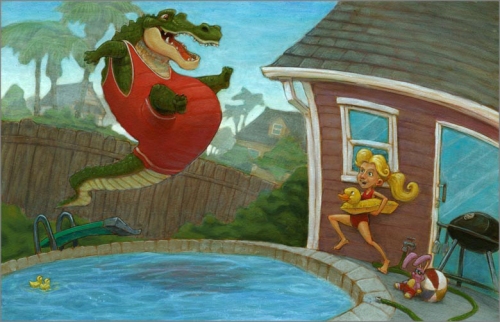
Would you ever like to write and illustrate your own book?
Absolutely! I have stories that I want to tell in both words and pictures. In the last little while I have really been pushing myself on a couple of book ideas I have to get them ready for submission to publishers. I’m still better a drawing than writing but I keep working away at it.
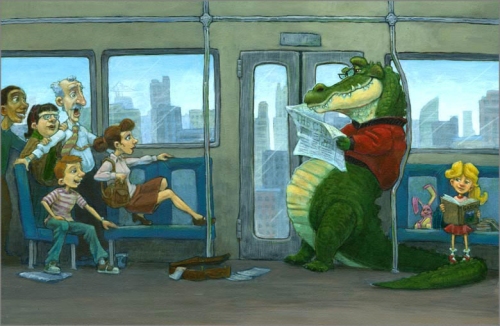
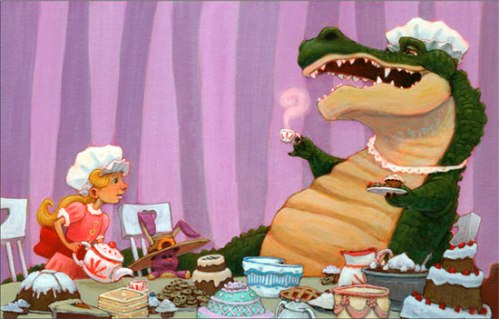
Are you open to illustrating for self-published authors?
I am, and have done several different project with self-publishers. I recently finished ‘Stories to Make you Dream’, by John Roozen.
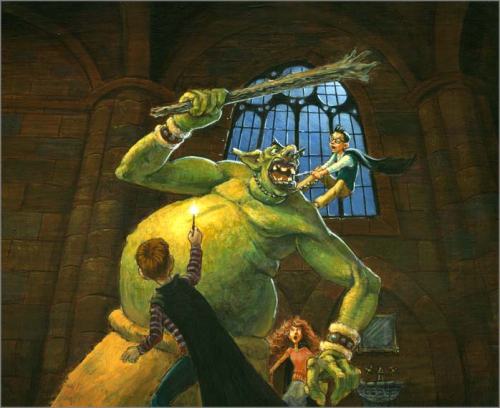
24. What types of things do you do to find illustration work?
My rep has my art featured on their site (http://www.wendylynn.com/artist.php?name=markmeyers) and on childrensillustrations.com. I also try to keep my website and blog updated (www.markmeyersart.com). I haven’t been real great at that part but I just revamped my website. In addition to WendyLynn sending out promotional material I try to get postcards sent out a couple times a year at least.
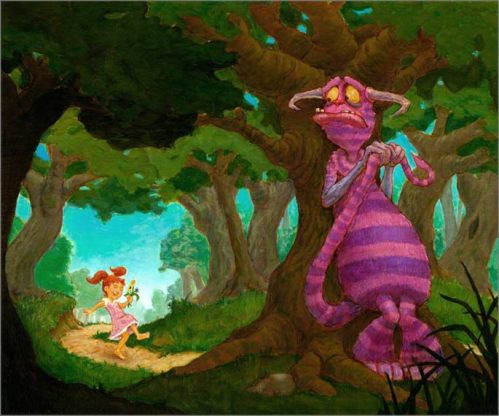
25. What is your favorite medium to use?
By far my favorite medium is acrylic. Though I like watercolors and oil too, but rarely use them for finished work.
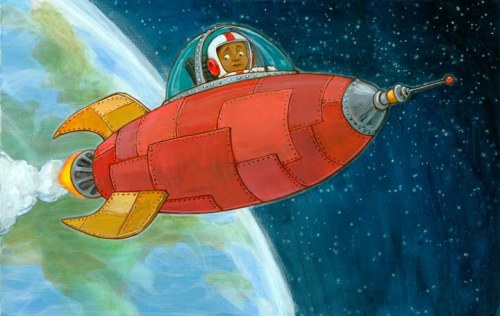
26. Not counting your paint and brushes, what is the one thing in your studio that you could not live without?
Well anymore it would be hard to get by without the computer. Also I recently picked up a 100 year old drafting table that I am in love with.
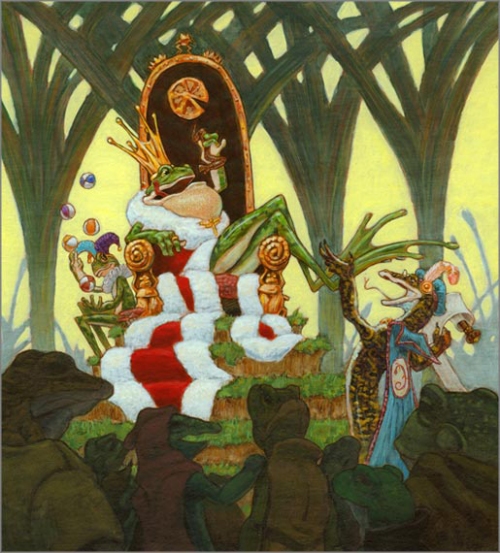
27. Do you try to spend a specific amount of time working on your craft?
I usually spend a full work day in my studio working on art. I guess that can range anywhere from 8-12 hours depending on deadlines and projects. Most of the time is consumed by current projects, but if I’m lucky to have some spare time then I try working on my back log of personal projects.
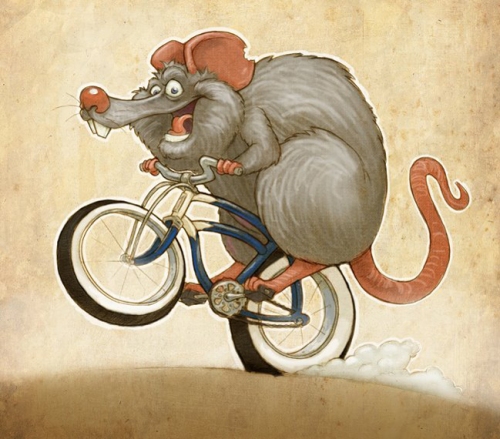
28. Have you ever won an award for your writing or illustrating?
In my last year at school I was honored to have two pieces of mine in the Society of Illustrators student competition.
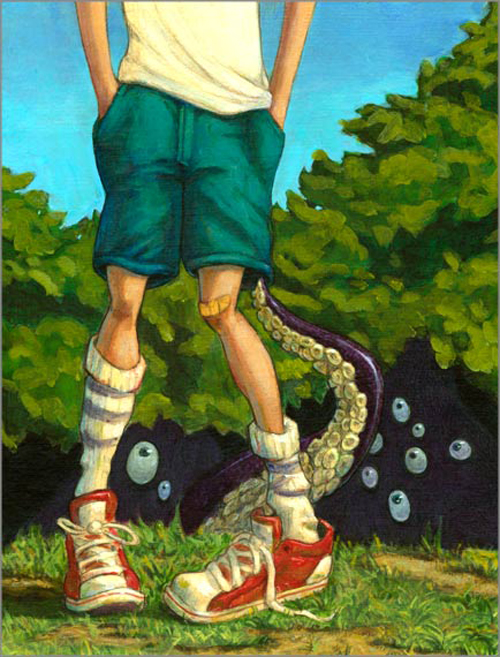
29. Do you take pictures or do any research before you start a project?
It kind of depends on the project but I usually do a fair amount of research. For me personally I try not to use much direct reference. I will study the reference and then put it away while I’m drawing and painting. That way it forces me to make it my own.
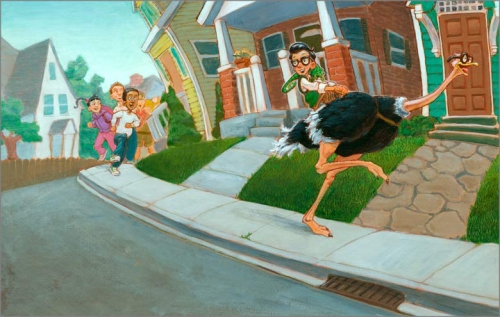
30. Do you think the Internet has opened doors for you?
I think so. The internet broadens the amount of people you can reach, and can get your work in front of a lot of people.
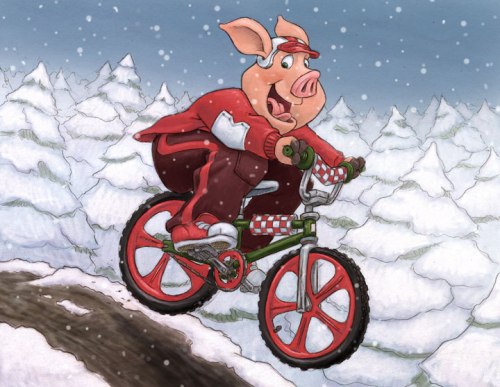
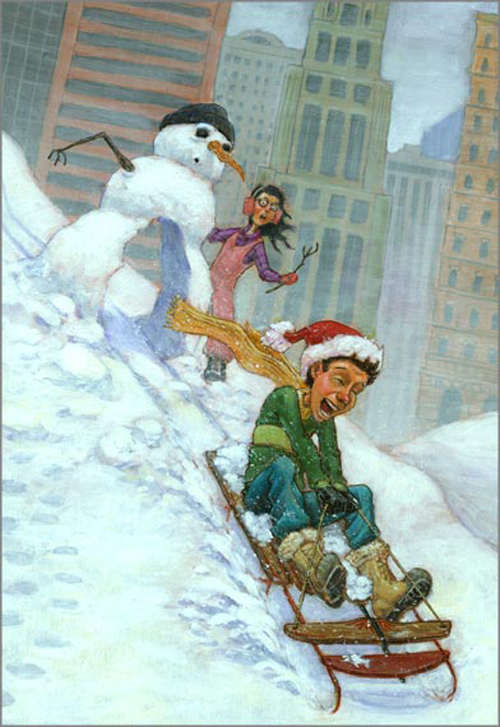
31. Do you use Photoshop with your illustrations?
I do a lot of my preliminary drawings and color studies in photoshop. If time is short sometimes I will finish a piece in photoshop but still prefer the look of my painted work.
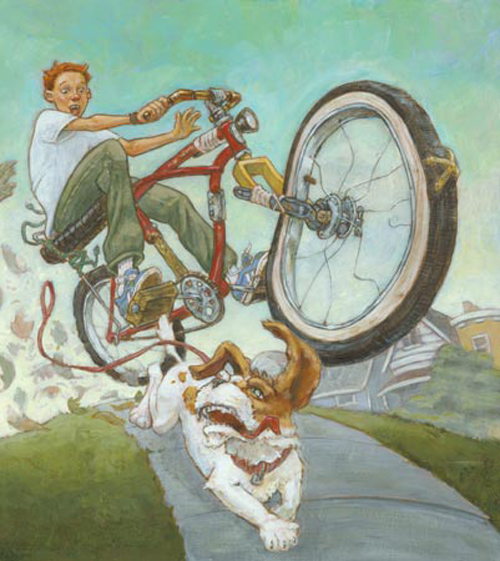
32. Do you own or have you ever tried a graphic Drawing Tablet?
Yes, I am currently using a Wacom Intuos 5. I think I would be lost working digitally without one.

33. Do you think your style has changed over the years? Have your materials changed?
It is hard for me to say if my style has changed. I think it gets refined with every illustration that I do so I guess it does. I would say the same thing happens with the materials too. You find new stuff that works and get rid of old stuff you no longer need.
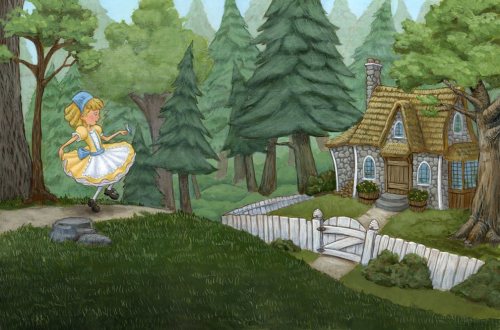
34. Do you have any career dreams that you want to fulfill?
I sure do. If I had done everything I had wanted to do then it would be time to find a new career.
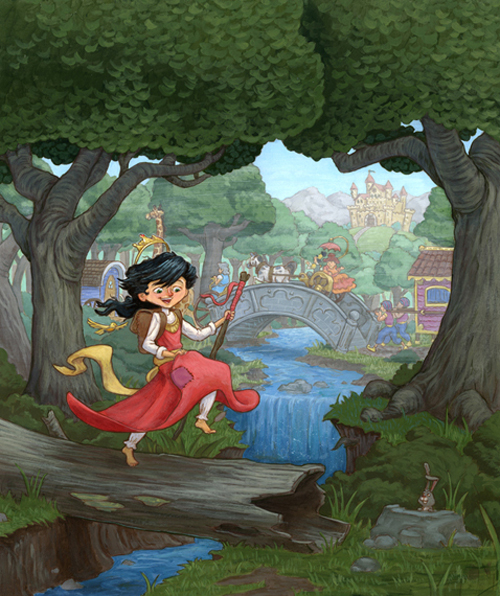
35. What are you working on now?
At this moment I am continuing to work on the Ballpark Mysteries series, book #2 in a series for a self-publisher, and a poster for a zoo.
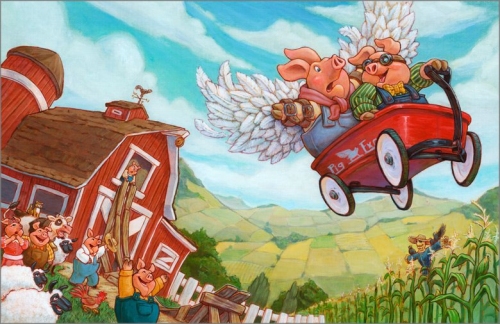
36. Do you have any material type tips you can share with us? Example: Paint or paper that you love – the best place to buy – a new product that you’ve tried – A how to tip, etc.
I am a big fan of Epson water color paper. It handles being stretched and is nice to paint back over. Lascaux makes an acrylic paint called tint white that I have found to be very useful. Though it’s not new I’ve been toying around with clear gesso and I’m really starting to like it.
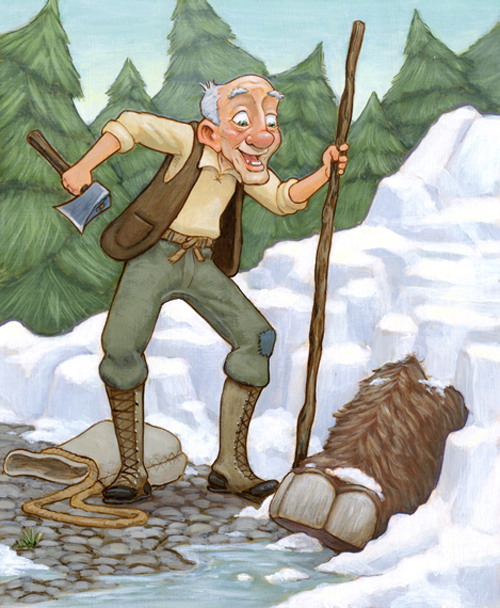
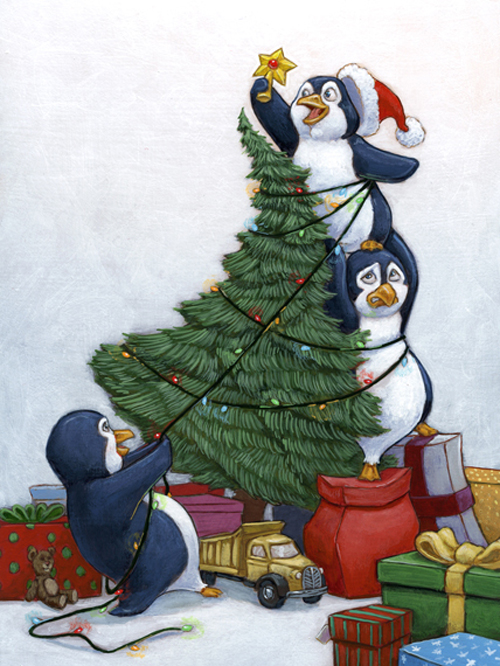 37. Any words of wisdom on how to become a successful writer or illustrator?
37. Any words of wisdom on how to become a successful writer or illustrator?
Don’t stop trying!!! From my experience in the illustration world there will be lots of ups and downs. You need to have passion for what you do and be always ready to learn. A sketchbook should be your best friend.
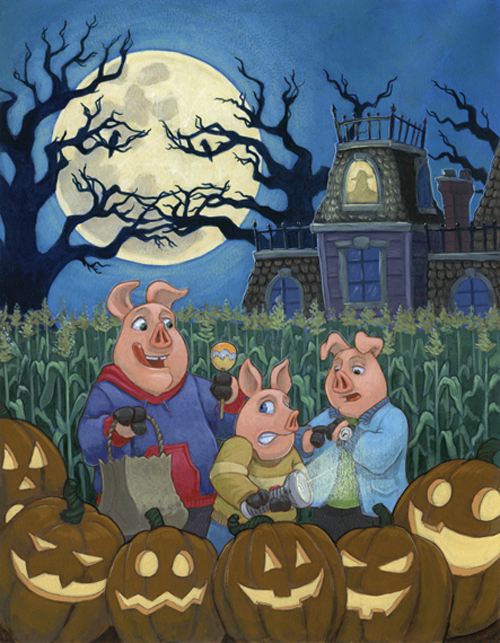
Thank you Mark for sharing your eye-catching illustrating and process with us. Please keep us up-to-date with all your future successes. We’d love to hear about them. Here is the link to Mark’s website: http://markmeyersart.com/
If you have a minute, please leave Mark a comment. We love to hear from you.
Talk tomorrow,
Kathy
Filed under: authors and illustrators, How to, illustrating, Illustrator's Saturday, inspiration, Interview, picture books, Process Tagged: Highlights for Children, Mark Meyers, Spider Magazine, Take Me Out to the Ball Game



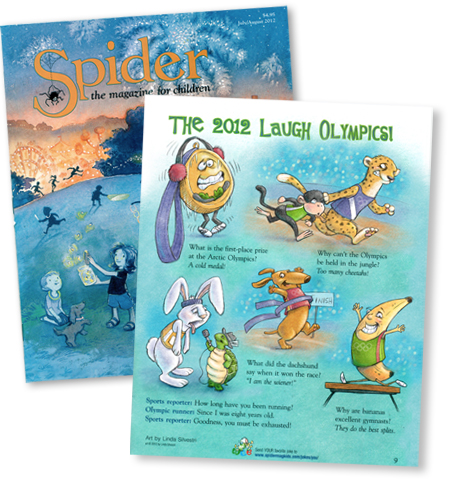






WOOOOOOOOOW! Mark, your work is spectacular! So full of color and action! There were so many I was taken by, it’s hard to pinpoint, but I can say that I “feel” the perspective, especially the ones on or over hills. Amazing stuff!
Thank you for sharing, Mark and Kathy
Awesome illustrations and a great interview. Thanks Kathy and Mark.